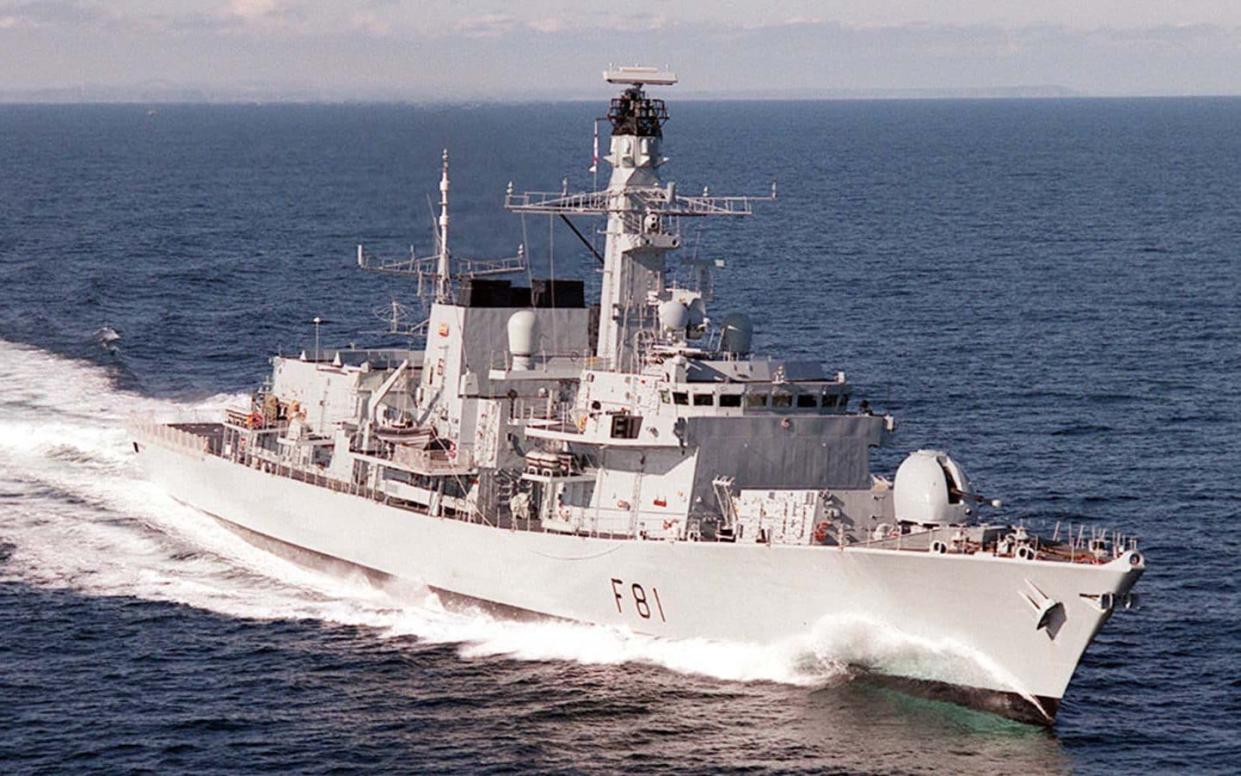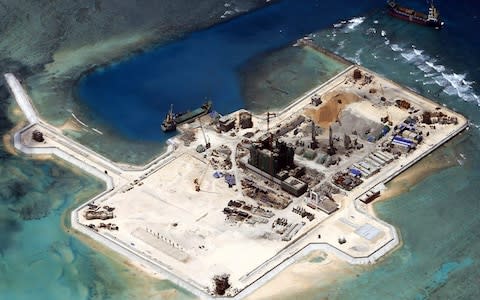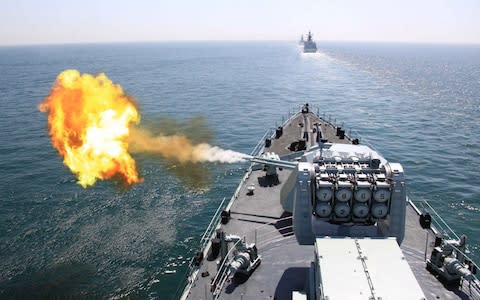Britain plots confrontation with Beijing by sending Royal Navy warship through disputed South China Sea

Beijing has warned against "stirring up trouble" in the South China Sea after Britain vowed to send a warship through the heart of disputed waters next month.
Gavin Williamson, British Defence Secretary, said HMS Sutherland, an anti-submarine frigate, would sail through the sea on its way home from Australia to assert freedom of navigation rights.
"She'll be sailing through the South China Sea and making it clear our Navy has a right to do that," he told The Australian newspaper after a two-day visit to Sydney and Canberra.
China claims nearly all of the strategic waters, despite partial counter-claims from Taiwan and several south-east Asian nations including the Philippines, Brunei, Malaysia, and Vietnam.
Observers say China is developing its military capabilities by fortifying and building infrastructure on what were previously reefs and partially-submerged islets in the sea, where more than $5 trillion (£3.8 trillion) of trade passes every year.
Chinese Foreign Ministry spokesman Geng Shuang said the situation on the South China Sea was "improving with each day" and he urged "those outside the region" to respect efforts made by China and its neighbours to resolve differences.
"Currently the South China Sea is calm and tranquil," he added, in response to a question from The Telegraph on the British plans.
"We hope other countries won't begin stirring up trouble."

Beijing has been enraged with previous ‘freedom of navigation’ patrols which have been carried out by the US Navy, and has sent out warships to confront them.
The US patrols have sailed within 12 nautical miles of disputed territory or artificial islands built by China - the distance internationally recognised as a territorial limit.
HMS Sutherland is the first Royal Navy warship to sail through the South China Sea since HMS Daring in 2014. Then the Type 45 destroyer did not challenge any of China’s territorial claims.
Mr Williamson would not say whether the frigate would sail within 12 nautical miles of the land formations.
However, he added: "We absolutely support the US approach on this, we very much support what the US has been doing."
Richard Bitzinger, a regional defence expert with the S Rajaratnam School of International Studies in Singapore, said the international community was powerless to react to China's assertiveness in the region despite the UK's tough words.
Territorial confrontation in the South China Sea
"It’s all huff-and-puff, and everything stays the same," he said.
"The fact of the matter is, China has created a fait accompli with these islands. The South China Sea is part of its strategic national interests, and hence Chinese presence in the South China Sea is permanent and perhaps becoming hegemonic. And there is very little anyone can do about it."
Bonnie Glaser, senior adviser for Asia at the Centre for Strategic and International Studies in Washington, said Australian, New Zealand, Japanese and probably French navy ships had sailed through the waters, but most countries "remain silent about such operations".
"There are navies other than the US Navy that sail through the South China Sea, but they don’t necessarily call them freedom of navigation operations," Ms Glaser told The Telegraph.

"I doubt any country other than the US is sailing inside 12nm around any land feature."
Ms Glaser said she doubted China would be enraged by these type of low profile "transit patrols", however, Beijing sharply criticised the UK last summer when it first raised the prospect of a freedom of navigation patrol.
Boris Johnson, Foreign Secretary, said he wanted to send the Royal Navy’s new aircraft carriers into the South China Sea, while former defence minister Sir Michael Fallon said Britain would “exercise the right to navigate the South China Sea”.
Lu Kang, a Chinese foreign ministry spokesman, said in response that countries involved with the territorial stand-off were “working together” to safeguard peace.
“Yet we see other countries who insist on stirring up trouble while the situation is heading towards calm in the South China Sea,” Mr Lu told a regular briefing in Beijing.
The spokesman then continued with unusually harsh language which appeared to be also directed towards Britain’s broader policy of allying itself with the US over major global issues.
He said: "Whatever banners these countries or officials claim to uphold, and whatever excuses they say they have, their track record of bringing chaos and humanitarian disasters through their so-called moral interventions in other parts of the world is enough to make nations and peoples in the region maintain high vigilance."

The People’s Liberation Army (PLA) navy regularly sails patrols and carries out drills throughout the region.
The Permanent Court of Arbitration in The Hague ruled in 2016 that China had “no legal basis” for its “nine-dash line”, which defines its claims.
The court ruled against China on virtually every substantive point at the end of the case, which was brought by the Philippines. However, Beijing said it does not recognise the court’s ruling.
Additional reporting by Christine Wei

